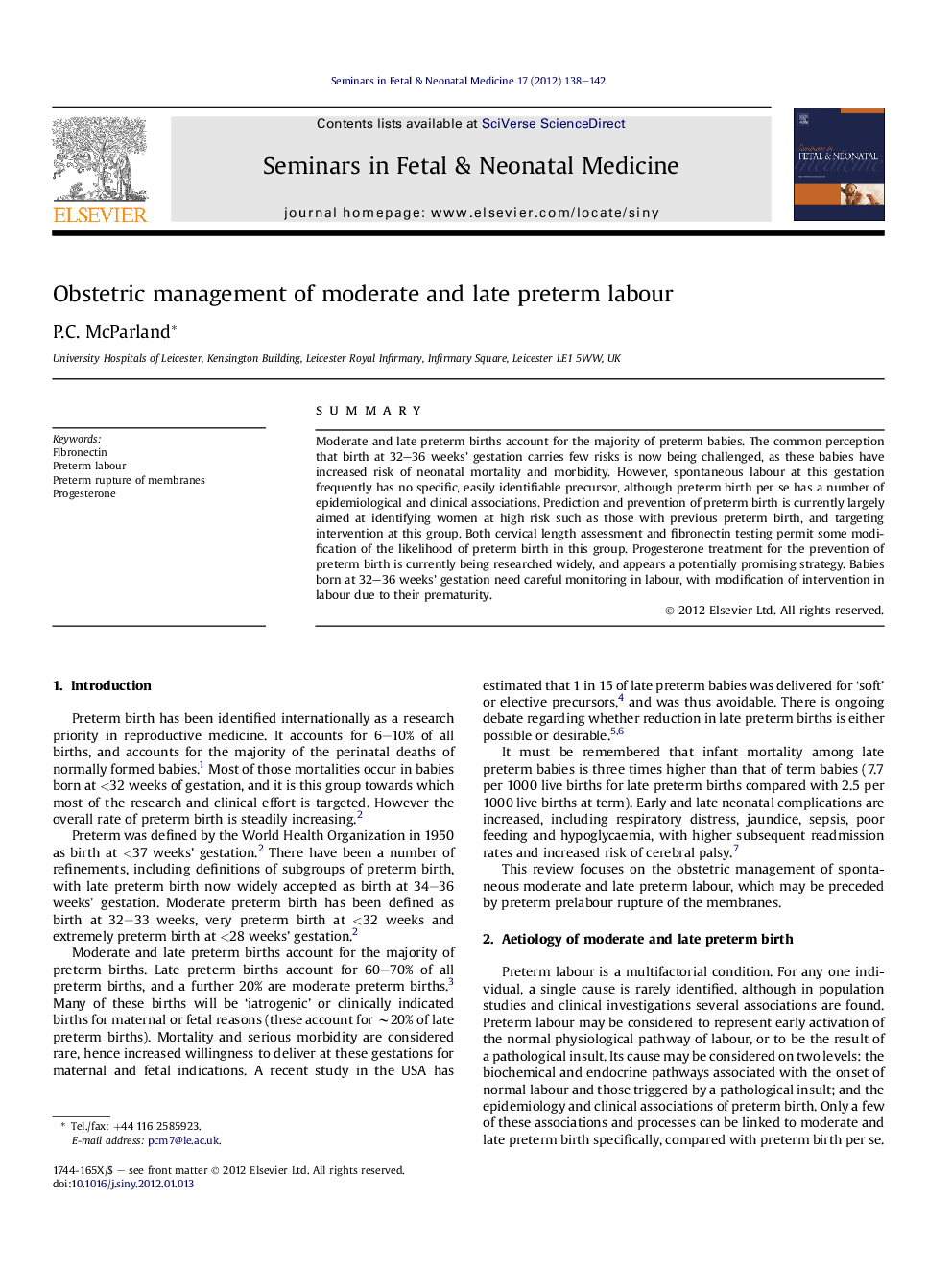| Article ID | Journal | Published Year | Pages | File Type |
|---|---|---|---|---|
| 3974345 | Seminars in Fetal and Neonatal Medicine | 2012 | 5 Pages |
SummaryModerate and late preterm births account for the majority of preterm babies. The common perception that birth at 32–36 weeks’ gestation carries few risks is now being challenged, as these babies have increased risk of neonatal mortality and morbidity. However, spontaneous labour at this gestation frequently has no specific, easily identifiable precursor, although preterm birth per se has a number of epidemiological and clinical associations. Prediction and prevention of preterm birth is currently largely aimed at identifying women at high risk such as those with previous preterm birth, and targeting intervention at this group. Both cervical length assessment and fibronectin testing permit some modification of the likelihood of preterm birth in this group. Progesterone treatment for the prevention of preterm birth is currently being researched widely, and appears a potentially promising strategy. Babies born at 32–36 weeks’ gestation need careful monitoring in labour, with modification of intervention in labour due to their prematurity.
